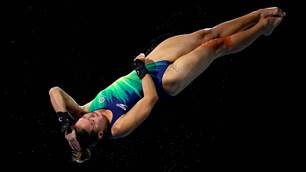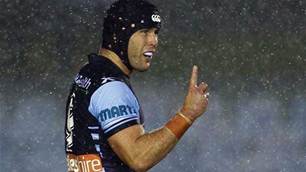Two of Australia’s most high-profile divers Melissa Wu, 20, and Alex Croak,27, take us through the life and leaps of a 10m platform diver
 Photos By, Warren Clarke
Photos By, Warren ClarkeTwo of Australia’s most high-profile divers Melissa Wu, 20, and Alex Croak,27, take us through the life and leaps of a 10m platform diver
Ten-metre platform diving is as close as the Olympics gets to the X-Games. A glance up at a concrete cliff edge at any public pool with diving infrastructure ends any doubt as to just how scary it would be for a mere mortal to leap off the top. “Watch me,” your boof-headed mate might boast, before ascending the tower’s steps. “After a few beers for some Dutch courage first ...” Surely this is a pursuit reserved for only the most fearless of athletes? Add in the physical demands of performing a range of pikes, tucks and twists, all before hitting the water at 60km/h without making so much as a ripple on entry and, come to think of it, those X-Games look a little tame ...Two of Australia’s most high-profile divers are Melissa Wu, 20, and Alex Croak, 27. You’ll remember Wu from Olympics and Commonwealth Games past as that fresh-faced kid who looked like she should be at home dreaming of one day performing on the world stage instead of actually winning gold and silver medals. Watch out for her again at London 2012. And Croak? No, you aren’t going insane – you saw her in her previous life at Sydney in 2000 representing her country in gymnastics. In 2010 she became Australia’s first-ever Commonwealth Games gold medallist in two different sports.From their NSWIS Homebush base, they take us through the life and leaps of a 10m platform diver
TIMETABLE
MELISSA: “All our afternoons [1.30-4pm] are the same. We train for about two and a half to three hours at the pool. In the mornings we’re at the gym Monday, Wednesday and Saturday [6-8.30am] and then the other mornings we’re at the pool working on our diving skills.”
DIVING BASICS
M: “The basics of a dive depend on what type you’re doing, but I guess the main aspect of any dive is a good top; you need to be dynamic off the platform. You need to jump high and start your rotation pretty quickly. Once you’re rotating, you need to be in a tight pike or a tight tuck, basically in a small position so that you’re able to rotate at a high speed.
“When you’re vertical you need to make sure that you’re not out of alignment so you get a clean entry. And then when you hit the water, obviously you have to stay tight.”
MUSCLING UP
M: “Divers rely heavily on their legs and abdominals, but we work on everything at training, including our calves, arms, triceps, biceps and hamstrings. We use a lot more muscles than a lot of diving outsiders realise.”
ALEX: “We work on any area we can to help make our movements explosive and dynamic.”
Related Articles

Wu: It means so much

Training with the Cronulla Sharks' Michael Ennis













